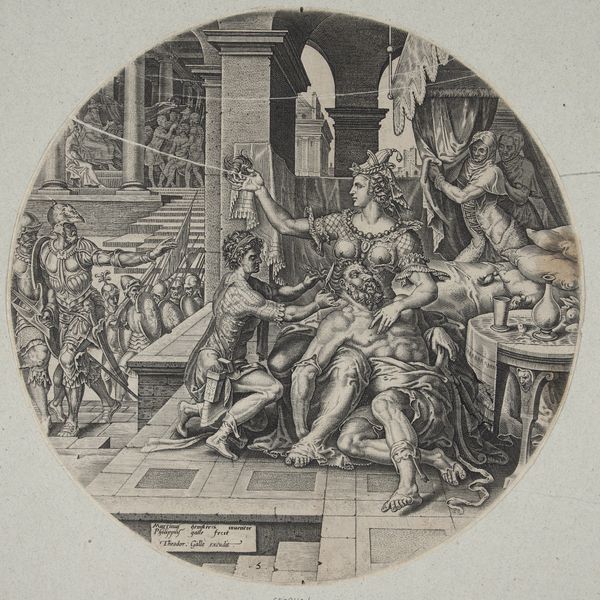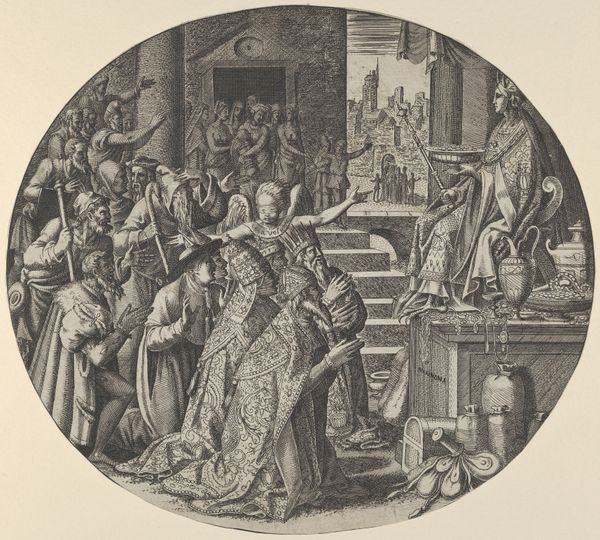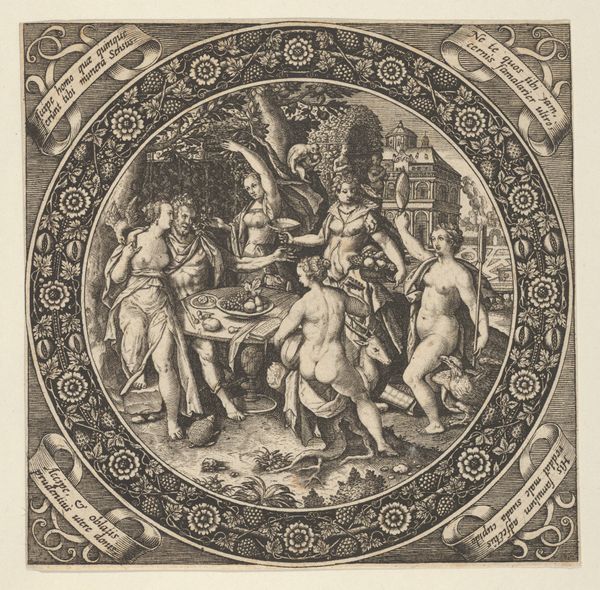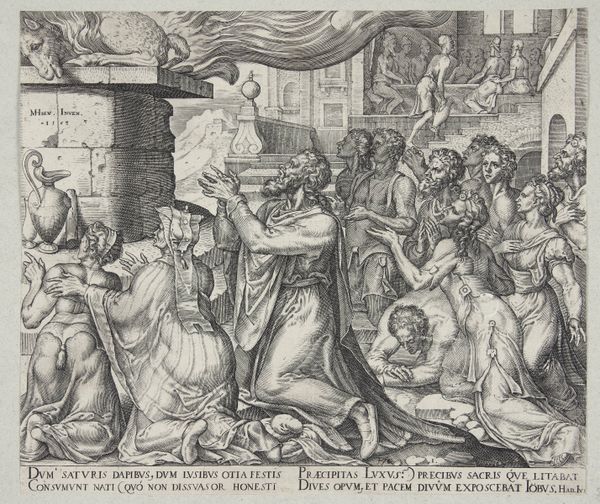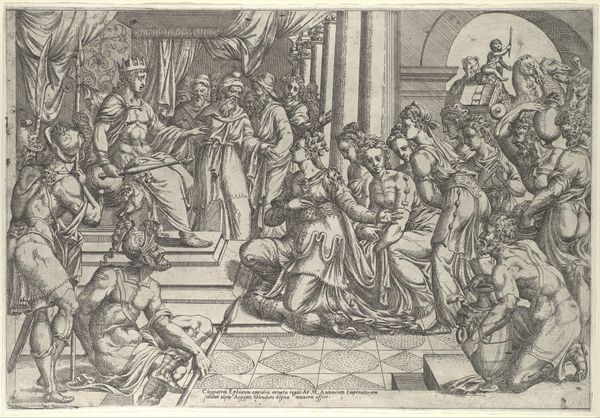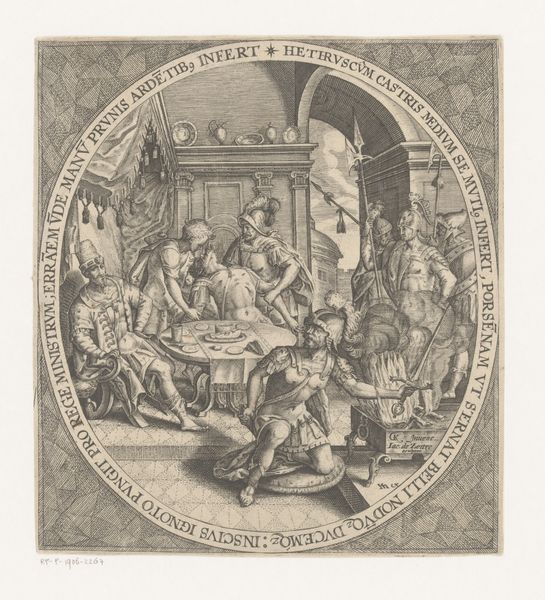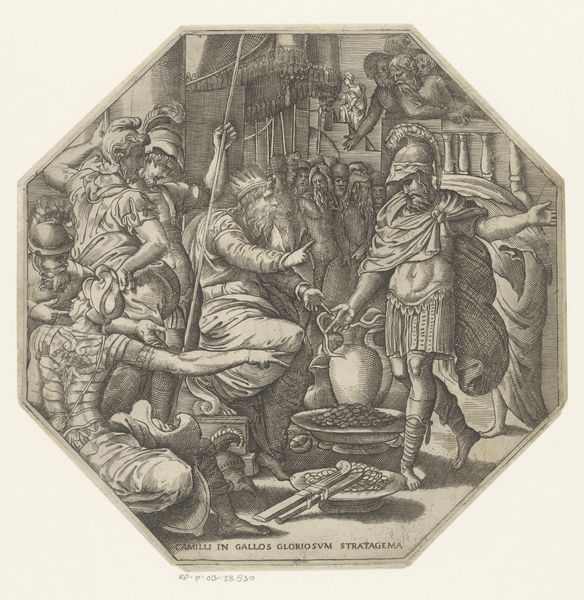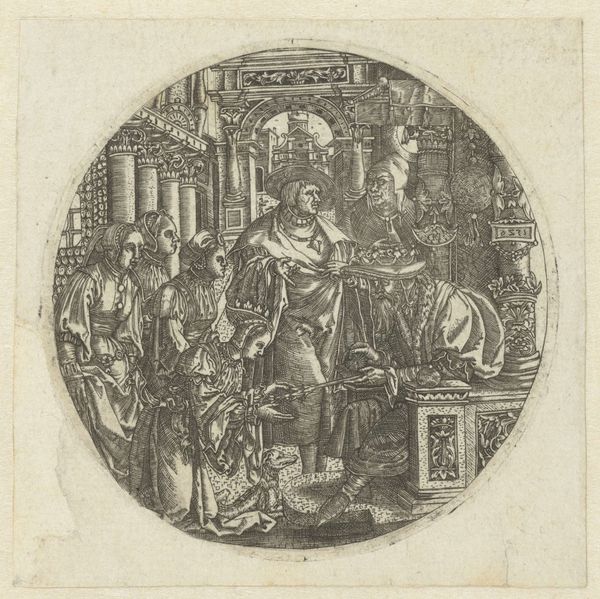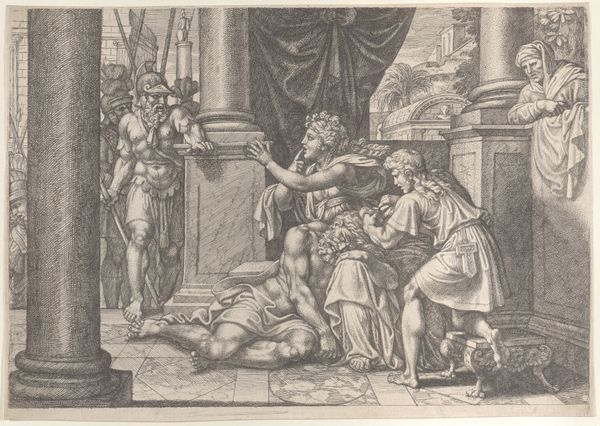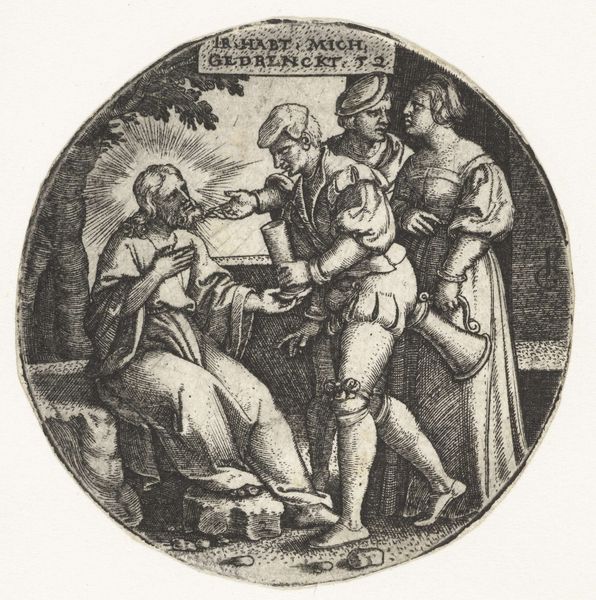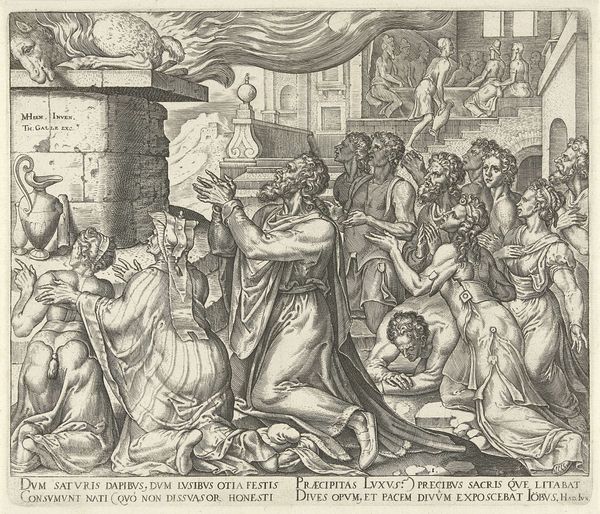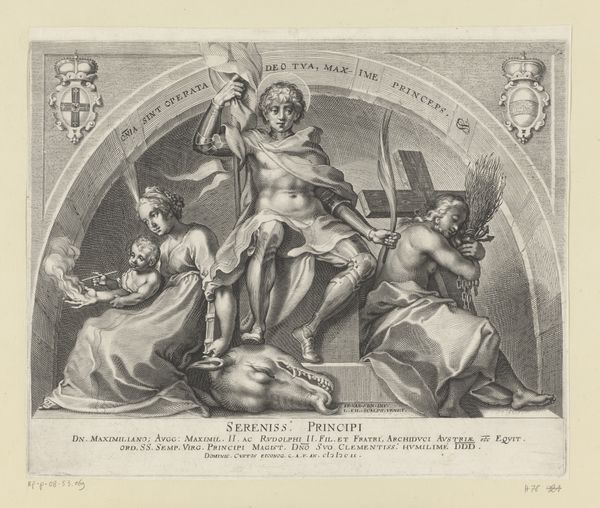
Scene with Galants at a Banquet in a Circle at Center 1580 - 1600
0:00
0:00
drawing, print, engraving
#
drawing
#
baroque
# print
#
dog
#
landscape
#
figuration
#
11_renaissance
#
line
#
genre-painting
#
history-painting
#
italian-renaissance
#
engraving
Dimensions: Sheet: 5 1/4 × 5 3/16 in. (13.3 × 13.1 cm)
Copyright: Public Domain
Curator: Welcome. We are looking at “Scene with Galants at a Banquet in a Circle at Center,” an engraving by Theodor de Bry, dating back to between 1580 and 1600. It's currently held in the collection of the Metropolitan Museum of Art. Editor: The atmosphere strikes me first. The composition within the circle creates an insular, almost claustrophobic space, yet the implied narrative teems with a dynamic bacchanal mood. The details—the postures and garments—immediately recall the Late Renaissance aesthetic. Curator: Yes, the baroque-style engraving is remarkable for its line work, establishing both form and value. We must appreciate the graphic, illustrative qualities of engraving during this period, primarily, how images circulated and reached wider audiences, often conveying moral lessons. The title implies 'Crapula et Lascivia' which signifies excess and wantonness. Editor: Indeed. Looking closely at the production, the material processes behind such an intricate image. The artist is carving away at a metal plate. Think of the labour involved in such detail and line work. We can see in the social dynamics captured the role of engravings in shaping or reinforcing social values of the time, specifically a kind of staged performance of upper class decadence and leisure. Curator: I'm interested in the composition. Notice how de Bry has structured the various elements. The seated figures, the dog, the architecture, the musicians, all exist in an incredibly organized spatial relation. And consider the symbolism embedded: The garland bordering the print suggests classical elements, yet the architecture indicates the Renaissance period. It's a very knowing, art historically astute composition. Editor: Consider what materials were readily available. Was De Bry using standardized copper plates from certain provenances? How much was he paid and in what type of currency, based on market demand and pricing pressures? Were the tools easily available? These questions, considered along the social circumstances of artistic creation, invite interesting insights that inform its aesthetics, of course. Curator: An astute observation. The dog is curious. Consider this as a symbolic signifier. Perhaps a representation of fidelity amidst a scene of debauchery, a moral counterbalance. Editor: In a way, the relatively accessible form of print media, when contextualized within the socio-economics, reveals the means through which knowledge, artistry and moralizing attitudes are reproduced and disseminated. Curator: A worthy material insight. Editor: Indeed. There are always multiple viewpoints.
Comments
No comments
Be the first to comment and join the conversation on the ultimate creative platform.
